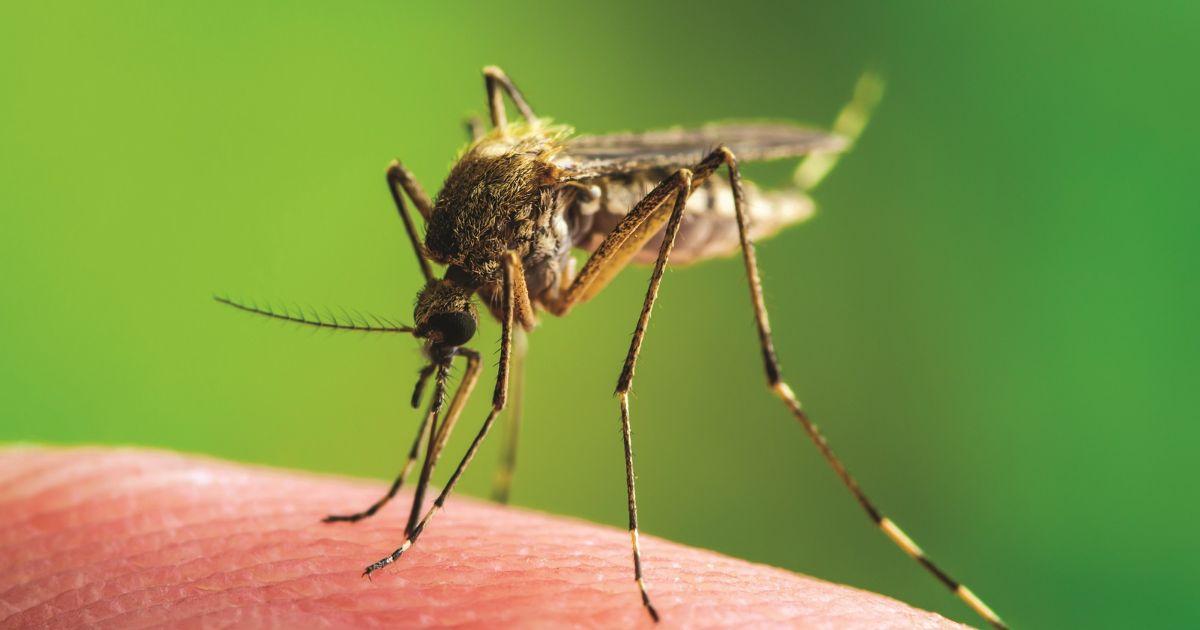As diseases go, West Nile Virus is still considered to be a relative newcomer to Canada, despite first being identified in the West Nile district of Uganda in 1937. It wasn’t detected in North America until 1999, when an outbreak swept through New York City.
“They noticed at a zoo there that some crows were dying, and they couldn’t figure out what was going on,” says Marnie Zimmer, a wildlife biologist with the Canadian Wildlife Health Cooperative, which instigated a national surveillance project to monitor birds for the virus in 2001. “We started doing testing for West Nile virus because we didn’t know how it was going to act in North America. What’s it going to affect? How is this going to be a public health concern? And what’s going to happen to wildlife?”

chickadees, eastern bluebirds, American robins), corvids (crows, jays, magpies, ravens), and raptors (goshawks, eagles, redtailed hawks, Cooper’s hawks).
From its dramatic beginning in the American northeast, the virus quickly spread across the continent and was first isolated from Canadian raptors in 2001. The first human case turned up in Ontario the following year. These days, West Nile virus is found throughout much of Southern Canada, with most human cases recorded in Quebec, Ontario and the Prairie provinces. Yet even in regions where West Nile virus is found, very few mosquitoes are infected and human cases in Canada tend to be low and variable, with the occasional spike year keeping things interesting.
Although it’s not totally clear why these fluctuations occur, experts believe that they are likely due to local weather variations, the impact those variations have on cycles in nature, and possibly even regional differences between how cases are reported.
Most West Nile virus infections are transmitted to humans, horses and other mammals through the bites of female mosquitoes that picked up the pathogen while feeding on the blood of infected wild birds, particularly corvids (blue jays, ravens, crows and the like) but also such familiar passerines as robins, finches, sparrows and starlings. A susceptible species can amplify West Nile virus enough for it to be passed on to the
next mosquitoes to bite it. When mosquitoes bite mammals, however, it’s a different story.

“These mosquitoes aren’t particularly fussy and, as you know, they will go for whatever is available,” says Zimmer, noting that unlike birds, mammals don’t generate enough West Nile virus to pass an infection on to a feeding mosquito, something that brings the transmission cycle to a halt. “Mammals are considered a dead end. We can’t replicate the virus. [Mosquitoes] can’t bite us and all of a sudden we give it to someone else. We’re a dead end for it.”
All told, West Nile virus has been found in more than 100 wild bird species, but not every species is equally proficient in its ability to transmit the pathogen. Some birds, for instance, can exhibit high levels of the virus in their blood as well as equally high death rates, shortening the period of time during which they can transmit an infection to mosquitoes. Other species may produce less virus, but they may also have a greater capacity to transmit West Nile virus because they can live longer after the initial infection, which creates more opportunities to pass the pathogen along.
Just as all birds are not created equal when it comes to transmitting West Nile virus to mosquitoes, not all mosquitoes are capable of transmitting West Nile virus to unsuspecting mammals, which is good news when you consider there are more than 80 different mosquito species living in Canada.
“What is clear is that we have different vector species that are transmitting the virus in Canada. In a very simplified way, you have two groups of species,” says Antoinette Ludwig, a veterinary epidemiologist with the Public Health Agency of Canada. “In central Canada — so, Ontario, Quebec — we have a species named Culex pipiens-restuans that is more known to be [adapted] to the urban or residential areas. And in the Prairies, you have Culex tarsalis that is more known to be adapted to rural environments.”
One thing these species have in common is that they feed on humans as well as on birds. This is key to transmission: A mosquito that doesn’t bite both birds and humans can’t transmit West Nile virus to people. “Most of the time, each species has its own particular animal that it likes. For instance, some mosquito species only bite birds, while some go between mammals and all these different things,” says Zimmer, who is based in Saskatchewan. “So this Culex tarsalis in Western Canada is the one that likes to attack us … in the late summer, and so you’ll often see that [corresponding] rise in human cases.”
The same is true in Central Canada, where Culex pipiensrestuans do the honours instead. In most of Canada, West Nile virus season starts when mosquitoes become active around mid-April and it continues until the first hard frost in the autumn. The bulk of human West Nile virus cases start turning up in August and September, when Culex mosquitoes hit peak activity and take to targeting mammals. Strange as it may seem, infected dead birds are a good indicator for whether residents of a particular region are at risk; as the number of infected dead birds increases, so does the threat to people and domestic animals.
The Canadian Wildlife Health Cooperative, which tests dead birds for West Nile virus in geographical areas where the risk is sufficiently high, has tested approximately 300 birds per year since 2009. “We look for West Nile virus when we get dead birds that come in through our laboratories,” says Zimmer. “They’re looking for [dead birds] early because, generally, when you see birds start dying, in a few weeks you’ll [start to see] human cases.”
Surveillance is ongoing throughout West Nile virus season. Currently, the focus is primarily on the Prairies, Ontario and Quebec, where most West Nile virus cases occur, but these efforts will expand over time so that shifts in the geographical boundaries of West Nile virus can be tracked. The aim is to, among other things, anticipate new outbreaks, monitor ongoing outbreaks, identify different kinds of mosquitoes that could potentially spread the virus, and determine if using mosquito control measures to reduce risk are appropriate.

It’s believed that up to 80 percent of people infected with West Nile virus develop no symptoms, and those who do become symptomatic tend to suffer a mild illness, consisting mostly of a fever, headache, body aches, a mild rash and swollen lymph glands. Fewer than 1 percent go on to develop serious neurological complications — which most commonly take the form of meningitis or encephalitis — and death is rare.
In the coming years, Canadians will likely face increased risk from West Nile virus due to climate change and a variety of environmental factors, which are expected to impact Canada’s flora and fauna in ways that make
emerging trends hard to predict because of the complexity of a transmission cycle involving multiple reservoir hosts and multiple mosquito species.
“We know that temperature is playing a major role, but there is also precipitation. Temperature is allowing the mosquitoes to decrease the length of its development in nature, so basically it means that there will be more mosquitoes sooner with warming, and the density of mosquitoes will rise more rapidly in the summer because it’s getting hotter,” says Ludwig. “The other impact of [warming] temperature is that it decreases the length [of time] necessary for the virus to amplify itself in the mosquito. So the mosquito is infected and it becomes infectious more rapidly. This is what happens at the vector stage.”
It isn’t just what’s happening with mosquitoes that’s a concern. “We know that birds are influenced by climate change in terms of survival, in terms of migratory routes, and many other factors,” says Ludwig. “I think that the very big variations that we observe are really the fact that this
system is complex. When you have an amplification in some regions — so, an epidemic in a region — it really
corresponds to a mix of optimal conditions from the vector side, from the virus side and from the host side to amplify. And this is difficult to predict because it’s complex.”
While experts are cautious when it comes to predicting trends, the one thing they seem certain about is the fact that West Nile virus is here to stay. “I honestly don’t know if I would see it going anywhere,” says Zimmer. “But it might expand its range. That’s why I think getting information out to people and having people aware is so important, because we all know that mosquito season comes.” And when it does, West Nile virus may very well come with it.

West Nile Virus Prevention
Since there is no vaccine or specific treatment for West Nile virus, prevention is key. Here are 10 things you can do to reduce the risk to you and your family.
1. Repair or replace damaged window and door screens.
2. Rid your property of standing-water sources, including old tires, children’s toys, flower pots, swimming pool covers, buckets and cans. Really, this would be any object where water can accumulate.
3. Clean out clogged eavestroughs.
4. Change the water in wading pools, bird baths and pet water dishes frequently.
5. Screen rain barrels and water tanks to keep mosquitoes out.
6. Encourage natural mosquito predators to visit your property. Birds, frogs, dragonflies, damselflies and bats are among the creatures that prey on mosquitoes.
7. Apply an insect repellent containing DEET or icaridin, and wear pants, long-sleeved shirts, socks and hats when heading outdoors during mosquito season.
8. Drape mosquito nets over baby carriers.
9. Avoid going outside at dawn and dusk, when mosquitoes are most active.
10. If mosquitoes are particularly bad, wear mosquito netting over your hat.
Vanessa Farnsworth is former horticulturist, journalist and long-time resident of rural British Columbia. She is the author of Rain on a Distant Roof: A Personal Journey Through Lyme Disease in Canada and her writings on Lyme disease and related tick-borne illnesses have been published in magazines and on blogs across Canada.











